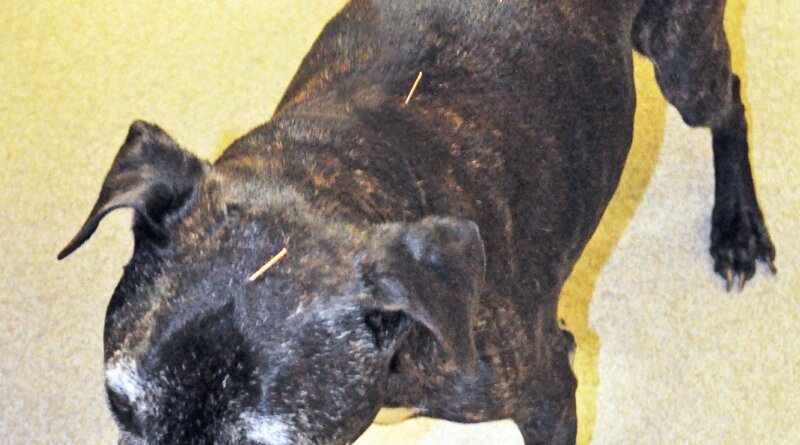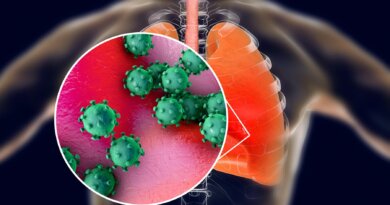Acupuncture for Dogs – Whole Dog Journal
Acupuncture can be a useful tool for managing pain in dogs with osteoarthritis and certain neurologic and musculoskeletal disorders, improving their comfort and quality of life. It’s particularly effective when used as a complementary therapy – in combination with other tools and modalities such as analgesics (pain medications), laser therapy, massage, and physical therapy.
Acupuncture originated around 100 BC as an important tool used by practitioners of Traditional Chinese Medicine (TCM). It is still used today for human and veterinary medicine, guided by the original principles of TCM, as well as others who find it to be effective for reasons other than those explained in TCM.
TCM Explanation of Acupuncture for Dogs
Traditional acupuncture is considered an alternative medical modality; the explanations that direct its use do not correlate with modern evidence-based medical practice.
In TCM, everything in nature (including humans and animals) contains a life force energy known as Chi (sometimes spelled as “qi” but always pronounced as “Chee”). Chi is said to travel throughout the body via a system of meridians or pathways. Meridians are not discernible structures in the body like blood vessels or nerves; they are intangible pathways through which the vital life energy flows. The meridians for dogs, like humans, are named and mapped, and each has an influence on certain organs and physiological functions in the body.
Chi has two polarities, or opposites, called Yin and Yang. A healthy and harmonious body has a proper balance of Yin and Yang. Think of the polarities on the ends of a battery. One end of the battery is the positive terminal and the other end is the negative terminal. When you insert the battery into a device, like the remote control for your television, electricity flows from the positive terminal through the circuits of the remote to the negative terminal. The flow of electricity is constant and balanced, much like Yin and Yang in a healthy dog or human.
In TCM, illness and pain is said to result from an imbalance between Yin and Yang. The flow of Chi through a particular meridian may become congested, blocked, or stagnated. This might lead to more Yin and less Yang in that meridian.
Acupuncture is the insertion of very fine needles into the skin to stimulate specific locations (called acupoints) along the obstructed meridian/s to allow Chi to once again flow freely and restore balance between Yin and Yang. Acupuncturists learn and memorize the name and influence of each acupoint that are present on the 12 meridians in the body, in order to both treat specific illnesses and injuries, and to promote wellness and prevent illness.
Canine Acupuncture Techniques
In classic acupuncture, very fine needles are inserted into acupoints that are associated with certain health conditions and are left in place for 10 to 30 minutes during the therapy session; this is known as dry needling. Other forms of acupuncture include:
- Electroacupuncture, an enhanced form of dry needling in which a low electrical current is applied between acupuncture needles.
- Aqua-acupuncture, the injection of very small amounts of sterile fluid into acupoints.
- Moxibustion, the application of heat to acupoints by burning small cones of dried herbs (moxa) near acupuncture needles.
- Laser acupuncture, the use of a low-intensity laser to stimulate acupoints. Laser acupuncture may be a good modality for dogs that do not tolerate the insertion of needles.
What To Expect During a Veterinary Acupuncture Visit
In a visit to a veterinarian who practices conventional Western medicine, the vet will ask you questions about your dog’s appetite, drinking habits, and energy level. She’ll want to know what you feed your dog, and whether her elimination habits are regular and normal. The vet will usually ask these questions while performing a physical examination of your dog, looking into her eyes, ears, and mouth, palpating her abdomen, and listening to her heart and lungs.
Veterinary acupuncturists will ask some of the same questions – but add others that might seem odd to you. For example, they might want to know whether your dog prefers to sleep in warm or cool places, and whether she prefers a hard bed or a soft one. And when they perform their physical examination of your dog, they will do things that conventional medical practitioners do not, such as feeling (not just counting) the strength and speed of your dog’s pulse in a variety of locations, especially the femoral artery (inside each of the dog’s hind legs near the groin), and looking at your dog’s tongue.

Using the additional information about your dog’s health gathered by these alternative diagnostics, veterinary acupuncturists decide where your dog’s Chi is blocked or stuck, and which acupoints they need to stimulate in order to restore the healthy flow of Chi.
Usually, the acupuncturist will insert needles in as few as six and as many as 30 locations on your dog. Dogs nearly always grow very calm as the effect of the treatment takes hold, and many dogs sleep for the 20 or so minutes that the needles are left in position.
While positive effects may be seen as soon as the same or next day, generally acupuncturists recommend bringing the canine patient back for at least six or eight sessions of acupuncture, scheduled at least once or twice a week for a few weeks, and then at longer intervals.
Modern Medical Interpretation of Acupuncture
Western scientists have found no evidence to support the existence of acupuncture points or energy meridians in the body, and studies of the modality’s efficacy are generally inconclusive. However, there is enough anecdotal evidence to support its ability to produce improved outcomes in treated humans and animals that many practitioners use the modality without necessarily believing the TCM concepts underlying the practice.
Today, the increasingly popular term, “Western Medical Acupuncture,” indicates the complementary use of acupuncture with conventional medical diagnoses and treatment.
Modern scientists have searched for alternative explanations for the effectiveness of acupuncture, speculating that while they are not yet appreciable with existing diagnostic tools, acupoints and meridians do exist along key aspects of the neuromuscular system. Acupoints have been found to correlate with where nerves enter muscles, along superficial nerves and at nerve plexuses, and muscle/tendon junctions. And TCM maps of meridians – those pathways through which Chi flows – often follow the same pathways as peripheral nerves.
There is ample evidence, however, that the body responds in observable ways to the stimulation of acupoints; there is a release of endorphins and endogenous opioids that can have an analgesic (pain-relieving) effect. Blood flow to the area around the acupoints increases, bringing anti-inflammatory mediators (known as cytokines) to the region. This reduces inflammation and promotes healing.
Recent studies have shown that acupuncture can be an effective complement to conventional therapies for certain medical conditions. Treatment of musculoskeletal and osteoarthritis pain with acupuncture combined with physical therapy and analgesics may improve a dog’s comfort and mobility more than just analgesics and physical therapy alone. And electroacupuncture may improve the outcomes for dogs with decreased or lost mobility due to intervertebral disc disease (IVDD).
How to Get Your Dog Started With Veterinary Acupuncture
If you are interested in adding acupuncture to your dog’s therapeutic plan for osteoarthritis, musculoskeletal pain, or IVDD, look for a veterinarian that is certified in veterinary acupuncture. Veterinarians certified in this field have undergone an intensive study in veterinary acupuncture and how to integrate it into Western medicine.
The International Veterinary Acupuncture Society maintains a directory of certified veterinary acupuncturists on their website at ivas.org/vets/. The American Academy of Veterinary Acupuncture also maintains a directory on their website at aava.org.



